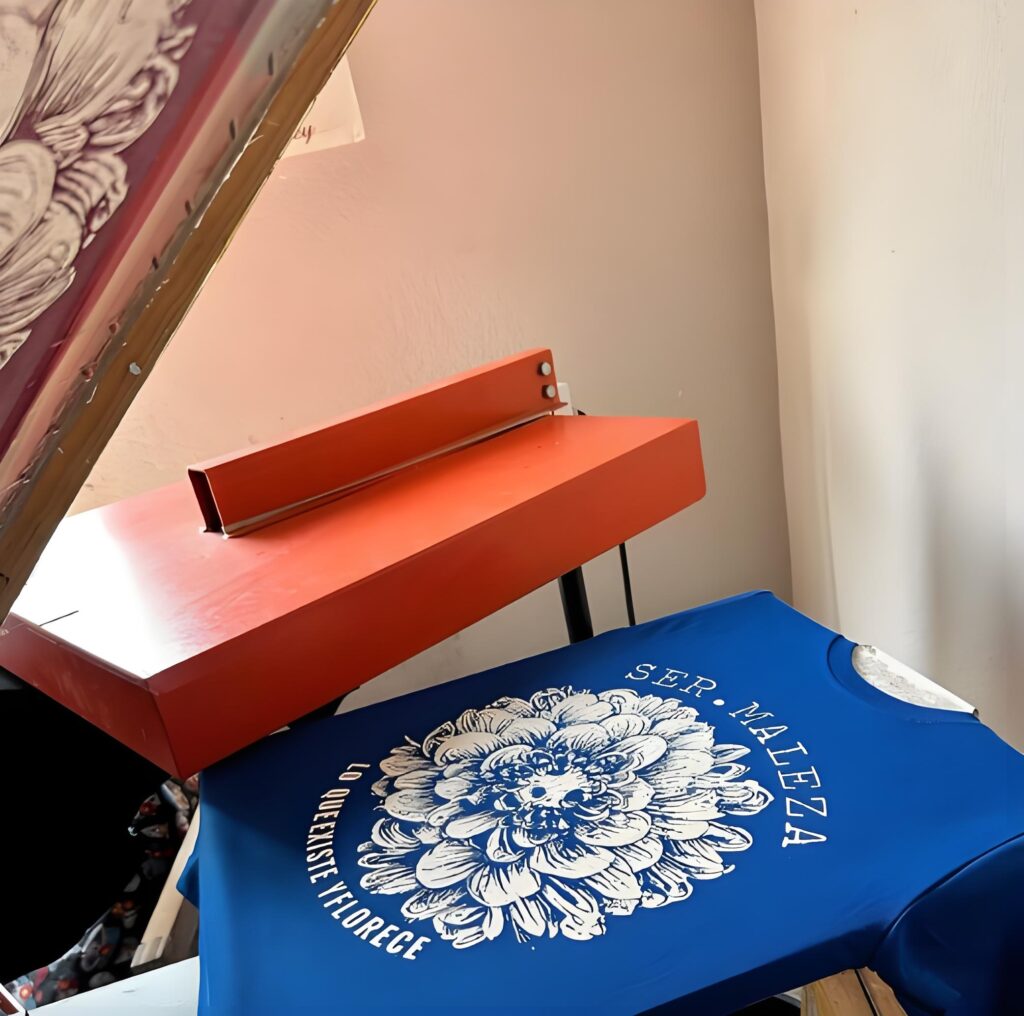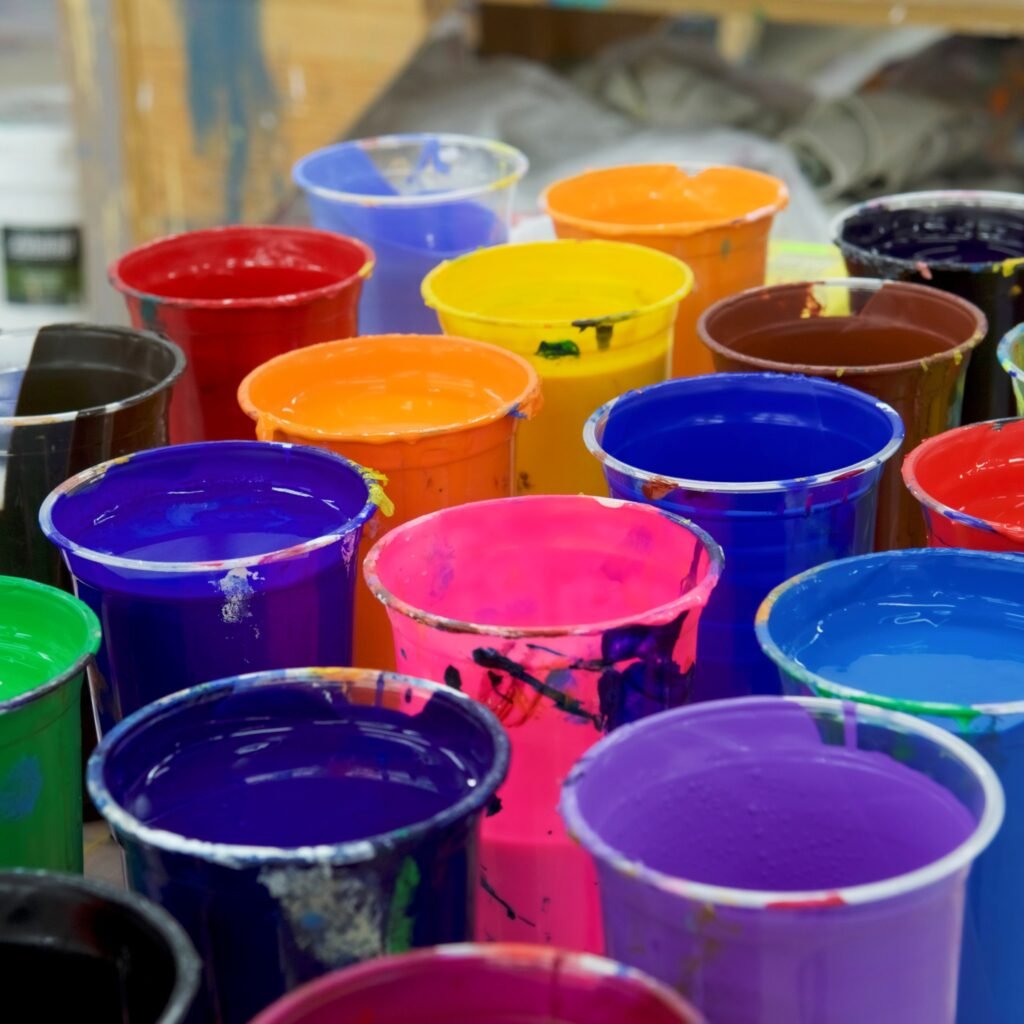Screen print transfers are transforming how custom t-shirts, textiles, and diverse clothing are created. This complete guide unravels everything you want to recognize approximately display print, from materials and device to the complex printing manner and the innovation behind display print transfers. Whether you’re a novice seeking to print your first shirt or an experienced display screen printer refining your technique, this article will screen insider recommendations, important know-how, and actionable recommendation. Discover why screen printing is one of the most flexible and enduring printing techniques, learn to pick out the right components, master the procedure for vibrant outcomes, and absolutely recognize the energy of display screen print in the apparel global.
সুচিপত্র
১. কি স্ক্রিন প্রিন্ট? Exploring the Basics
Screen print, additionally referred to as silkscreen or silk screen printing, is a traditional printing approach that entails shifting ink thru a mesh display screen onto a substrate consisting of material, paper, or plastic. This versatile technique is famend for producing vibrant, long lasting designs and is typically used for t-shirts, garb, posters, and more.
The display screen printing technique centers round creating a stencil or layout at the display, then pulling printing ink throughout the mesh so it deposits onto the favored areas of the material. Each coloration in a broadcast layout commonly requires its personal display screen, allowing ambitious, multi-colored pix and text.
Throughout the years, display screen print has evolved but keeps its middle technique—making it necessary for each hobbyists growing one-off revealed t-shirts and mass manufacturers of company apparel. If you’re interested in custom photographs or strolling your own merchandise line, screen printing is a foundational method to recognize.
2.The Essential Screen Printing Supplies and Equipment

To start your screen printing journey, you’ll need to acquire the necessary screen printing materials and device. These consist of a mesh display screen, squeegee, printing ink (like plastisol ink or water-based inks), emulsion, and a rigid frame.
Your first decision is the screen itself. Made of polyester or mesh material, screens are available in one of a kind mesh count number stages that have an effect on the element and ink deposit of your print. Higher mesh rely displays are higher for tricky art, at the same time as lower counts deposit more ink for bold, opaque fields.
Equally crucial are the supplies and system you pick. Brands like Speedball provide starter kits, while pro setups may also involve publicity units, cleaning chemicals, or even computerized printing presses. Remember, excellent screen printing components not simplest growth sturdiness but additionally ensure always sharp outcomes.
3.How Does Screen Print Work: The Printing Process Explained
The display printing system comprises numerous wonderful steps: preparing your display, applying emulsion, exposing the picture, washing out non-photograph regions, and in the end printing the design. Each step leverages particular display screen printing products and a touch persistence for pleasant effects.
First, the stencil is created with photo emulsion. The emulsion is spread onto the screen and dried in a darkish room to avoid untimely exposure. Your design, revealed onto acetate movie, is placed over the display screen. Using a light source or publicity unit, the emulsion remedies aside from wherein the design blocks it. After rinsing, open areas form the stencil.
When printing, the display sits atop the substrate. Ink is poured onto the display, and a rubber blade (the squeegee) pulls the ink throughout the display, pushing it via open areas to go away the design revealed onto the material. The procedure is repeated for every color to create multi-layered, vibrant prints.
4. All About Screen Printing Ink: Plastisol, Water-Based, and More
Choosing the right screen printing ink is important for attaining the preferred effect on your textiles. The two most common sorts are plastisol ink and water-based inks, each with its strengths and perfect applications.
Plastisol ink is a favorite among display screen printers for its colourful colour, sturdiness, and ease of use. It sits atop the material rather than soaking in, bearing in mind formidable, opaque prints on each darkish and mild t-shirts. Plastisol does, however, require warmth to cure—typically with a warmness press or dryer.
Water-based totally inks penetrate the cloth fibers, ensuing in a softer experience and a more “antique” aesthetic. They’re green and best for lighter substances, although they will require greater specialised competencies to avoid drying inside the display screen. Always healthy your printing methods and ink to the fabric and look you need to reap.
5. Emulsion and Stencil: Crafting the Perfect Printed Design
The heart of any exceptional screen print lies within the stencil creation. Modern display screen printers use photograph emulsion—a mild-touchy liquid that, while uncovered, hardens besides where your design shields it.
After frivolously spreading emulsion over your mesh display and letting it dry in darkness, you overlay your layout (on acetate movie) and expose it to a sturdy mild source or exposure unit. The areas of the display screen blocked by your artwork remain gentle, allowing you to scrub them out and screen the design.
This technique guarantees your revealed layout can be crisp and precise, with sharp strains and easy fills. Whether you use “pre-burned monitors” for comfort or manually create stencils, getting to know emulsion paintings elevates your silk display printing outcomes immensely.
6.Mastering the Screen Printer and Printing Machines
Getting snug with a display printer (manual or automatic) is prime to generating consistent nice. For beginners or the ones on a price range, a manual press or even a simple body suffices for smaller runs of published t-shirts.
Commercial ventures and larger orders advantage from advanced printing machines or automated printing presses. These allow for quicker manufacturing, greater particular registration between shades, and steady strain, which is critical for multi-layer display screen print jobs.
Remember, whether or not the usage of a hand held squeegee or high-tech system, success in silk screen printing comes from practice, patience, and know-how how options like one color or multi-colour setups affect your final product.
7.Heat Transfer vs. Traditional Screen Print: What’s Best?
Many beginners wonder whether or not warmth switch or conventional screen print is better for t-shirts and apparel. Each technique has its enthusiasts, but there are awesome differences.
Screen printing is celebrated for its sturdiness and placing look, best for bulk runs and patterns wherein layers of ink create complicated designs. However, it involves set-up time and separate screens for each coloration.
Screen print transfers, produced using comparable strategies but transferred with a heat press, supply nearly the same effect with greater flexibility, specifically for on-demand or low-amount orders. Heat transfer is short and calls for minimum setup, but may additionally barely lack the tactile sense of direct ink prints, especially on certain textiles.
Your preference relies upon in your needs: traditional display print for vibrant, lengthy-lasting runs, or warmth transfer for speed, comfort, and quick custom print jobs.
8. Step-by-Step Guide: Making Custom Screen Print T-Shirts
So, you want to create a custom display print for t-shirts? Start by deciding on premium display screen printing resources—a mesh display, emulsion, squeegee, and the proper printing ink to your textile or garb.
Prepare your mesh display screen by way of stretching it tightly on a frame and making use of the emulsion.
Use your mild supply or publicity unit to switch your shirt design (thru a stencil on acetate movie) onto the display screen.
After developing the stencil, location your t-blouse flat under the screen on a printing press.
Flood the display with display printing ink and use the squeegee for organization, even strain throughout the display.
Carefully carry the screen, test your print, and cure the ink (both air-dried or warmth-cured, depending on ink type).
With practice, you’ll benefit mastery over each step, producing formidable, expert-satisfactory published t-shirts along with your signature fashion.
9.Screen Print Transfers: How Do They Work?
Screen print transfers combo the nice of each worlds: the traditional appearance of a screen print, but applied to the blouse with a warmth press. The technique starts by using making the design simply as you will in traditional display printing, but printing it onto a special switch paper as opposed to the t-blouse.
Once your design is prepared and cured, lay the transfer paper onto your t-shirt and observe heat and strain using a warmness transfer press. The ink bonds with the fabric, mimicking the durability and vibrancy of direct display screen printing.
This approach is ideal for difficult photographs that require particular placement, rapid turnaround times, or on-call for runs. You can stockpile pre-printed designs (pre-burned screens or pre-made transfers) and convey custom jobs in seconds!
10.Top Tips for Silk Screen Printing on a Variety of Materials
Silkscreen printing isn’t confined to cotton t-shirts. You can print onto nearly any type of substances, which includes polyester, blends, and even non-textile items. The key’s adjusting your display screen printing technique and display screen printing ink to match the floor.
For polyester and other complex fabric, use low-treatment or in particular formulated inks to keep away from dye migration and make certain crisp results. Gauge your mesh count number, as special textures and thicknesses affect ink glide and print sharpness.
Never overlook to check your silk screen technique and combination of components before massive runs. Mastery comes from experimentation, so don’t hesitate to try water-based totally, plastisol, or discharge inks to see which best fits your screen printing needs.
Key Takeaways: Screen Print & Supplies Mastery
- স্ক্রিন প্রিন্ট is a time-tested, versatile printing technique ideal for custom apparel and a variety of other products.
- Core screen printing supplies include mesh screens, emulsion, ink, squeegee, and exposure unit.
- Selecting the right কালি—plastisol or water-based—tailors your results to the textile.
- ইমালসন এবং স্টেনসিল work are crucial to crisp, detailed designs in silk screen printing.
- Manual and automated screen printer options exist for every budget and run size.
- Heat transfer এবং screen print transfers bring flexibility to on-demand t-shirt printing.
- Adjust your gear and screen printing supplies and equipment to the substrate for best results.
- Pre-burned screens and ready-made transfers save time for recurring designs.
- Practice and experiment with printing methods to refine your screen printing process.
- Always test materials, and never skip proper curing for long-lasting, vibrant prints.
With this knowledge at your fingertips, you’ll be ready to create show-stopping custom t-shirts and tackle any screen print challenge!



